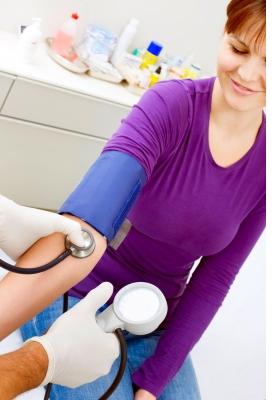 Everybody has heard the term “high blood pressure,” but a lot of people don’t know exactly what the term means, or what steps they can take to prevent it. Hypertension, another word for high blood pressure, is defined as the amount of pressure that blood exerts on blood vessel walls as it passes through the vessel. It is a primary risk factor for cardiovascular disease such as stroke, heart failure, angina, renal failure, and myocardial infarction or heart attack. It is also a stronger independent risk factor for mortality from coronary heart disease among elderly women than among elderly men.
Everybody has heard the term “high blood pressure,” but a lot of people don’t know exactly what the term means, or what steps they can take to prevent it. Hypertension, another word for high blood pressure, is defined as the amount of pressure that blood exerts on blood vessel walls as it passes through the vessel. It is a primary risk factor for cardiovascular disease such as stroke, heart failure, angina, renal failure, and myocardial infarction or heart attack. It is also a stronger independent risk factor for mortality from coronary heart disease among elderly women than among elderly men.
There are two different measurements involved in measuring blood pressure, systolic blood pressure (SBP) and diastolic blood pressure (DBP). SBP is the highest pressure on the vessel walls immediately after one single heartbeat, and DBP is the lowest pressure on the walls immediately before. Hypertension is defined as having an SBP of at least 140 mmHg, and/or a DBP of 90 mmHg.
Causes and Implications of Hypertension
Hypertension is problematic because it makes the heart to do extra work when pumping blood throughout the body. It is associated with obesity, high sodium intake, low potassium intake, physical inactivity, heavy alcohol consumption, and psychosocial stress. The accumulation of intra-abdominal visceral fat, which is fat located inside the body around organs instead of right beneath the skin, also plays a role in the development of the disease. Hypertension also promotes the presence of coronary calcium, which is a potential predictor of sudden death. Furthermore, it is associated with some changes in the brain, such as impaired cognitive function; it may lead to retinopathy, a degenerative disease in the eye; and it can cause nephropathy, a disease of the kidney.
How May Exercise Reduce Hypertension?
Put simply, regular exercise can make the heart stronger, enabling it to pump blood with less effort. Exercise training can lower cardiac output (the amount of blood being pumped through the heart) and peripheral vascular resistance (the resistance of the flow that must be overcome to push flow through the circulatory system) at rest, and at any given level of work. Exercise can also decrease visceral fat and central fat deposition, rather than just body weight, which will reduce blood pressure in most people. Specifically, aerobic exercise will decrease resting SBP and DBP. Even exercises of moderate intensity can induce these beneficial changes. Exercise training may even reduce or eliminate the need for antihypertensive medications in patients with mild or severe hypertension.
Exercise Guidelines
The typical blood pressure response to acute bouts of aerobic exercise is a gradual increase in SBP and gradual decrease or no change in DBP. The recommendations for exercise for those with mild hypertension are generally the same as those for healthy adults. Endurance or aerobic exercises three to five days per week for 20 to 60 minutes, at the intensity of 60 to 85 per cent of maximum heart rate. However for those with severe hypertension of markedly elevated blood pressure, the intensity should be lowered to about 50 to 70 per cent of maximum heart rate. Weight training usually results in increased SBP and an associated increase in DBP during the exercise bout. However, there is a smaller increase in heart rate compared to aerobic exercise. The blood pressure response between individuals contains great amounts of variability. Therefore, a person should exercise cautiously when performing any type of weight lifting. Interestingly, circuit training has been shown to result in a modest drop in DBP and no change in SBP. Finally, for any person with hypertension, lifestyle modification including diet, weight loss, and exercise is required to help manage the disease. Be sure to contact your doctor before starting an exercise program.
